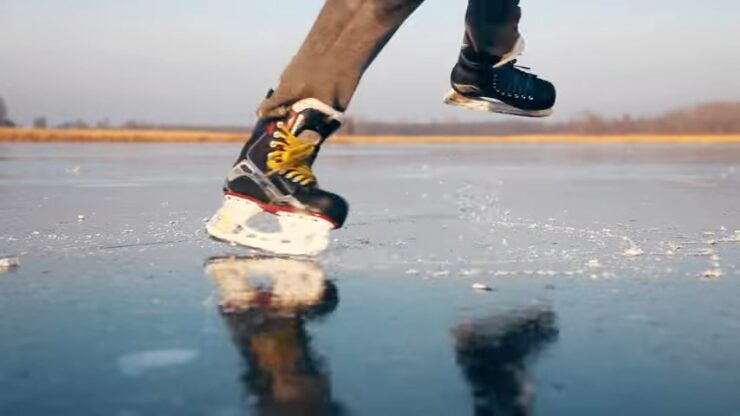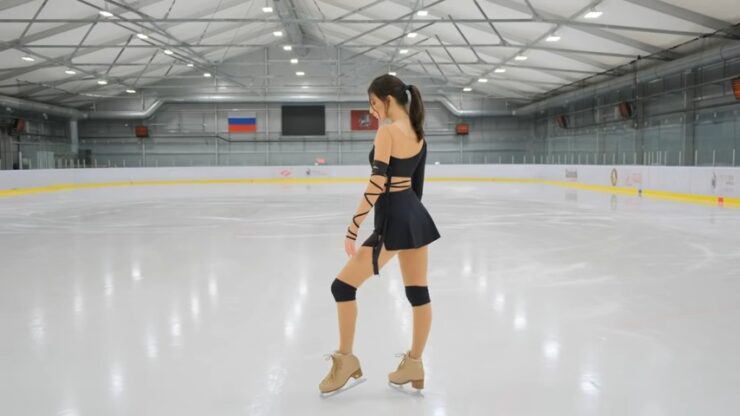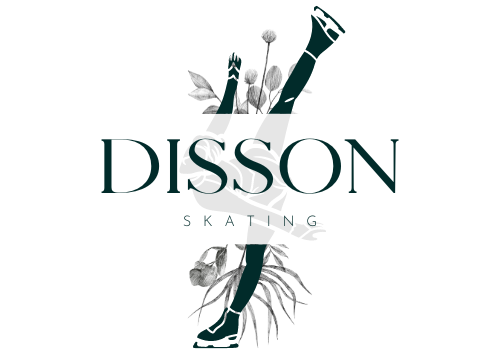Ice skating, a beloved winter pastime, traces its roots back to primitive times, with the first skates made of bones strapped to feet. Today, it’s a widely celebrated sport and recreational activity, fascinating people of all ages across the globe. Whether you’re aiming for Olympic gold or just want to glide through your local ice rink, this guide will introduce you to the captivating world of ice skating.
Choosing the Right Ice Skates for Beginners
The journey to becoming an adept skater starts with picking the right skates. First, it’s crucial to understand the two major types: figure skates and hockey skates. Figure skates have a toe pick and longer blades, aiding in executing jumps and spins. In contrast, hockey skates, with their curved blade and no toe pick, are designed for speed and agility.
Beginners might find figure skates more comfortable due to their more generous interior padding and added ankle support. However, both options are acceptable for a beginner. The right choice comes down to your specific goals, comfort, and preference. Remember, the right fit is paramount – your skates should feel snug but not overly tight, supporting your ankle and heel without causing discomfort.
Understanding the Ice Skating Rink Environment

Stepping onto an ice rink can be intimidating for beginners, but understanding the environment can help. First, ice rinks are cold, usually kept between 24 to 26 degrees Fahrenheit, so dress warmly. Layering clothing is a good idea, as you can always remove layers if you get too warm.
On the ice, the rink’s outer edges are usually reserved for beginners, while more experienced skaters and those practicing specific skills occupy the middle. Ice is maintained regularly with a machine known as a Zamboni, which smooths out the surface and fills in the scratches and grooves from skates. Understanding these elements can contribute to a more comfortable and confident start.
Essential Safety Tips for Beginners on the Ice

Safety is paramount in any sport, and ice skating is no exception. Wearing a helmet, especially for beginners, can provide protection from potential falls. Knee and elbow pads can also prevent injuries.
Additionally, learning how to fall safely is vital. If you feel yourself losing balance, aim to fall to the side and tuck in your arms to avoid injuring your wrists. It’s equally important to learn how to get up—knee over the knee, hands on the knee, then stand up. Practice this off the ice first until you’re comfortable.
Mastering the Basic Ice Skating Techniques
Once you’ve got your skates on and you’re safety-equipped, it’s time to get on the ice. Initially, you might find yourself clinging to the sides of the rink. That’s perfectly okay! Start with “the march,” walking on the ice, keeping your feet hip-width apart and hands out for balance.
As you grow comfortable, you can progress to the “swizzle” or “glide.” For this, place your feet in a “V” shape, push your feet outwards, and then back in. The key is to bend your knees, lean slightly forward, and maintain a relaxed posture. Remember, slow and steady progress wins the race in ice skating!
Balancing and Posture: The Foundation of Ice Skating

Balancing and maintaining a correct posture are the cornerstones of ice skating. Keeping your knees slightly bent, your body weight centered over the blades, and your arms out to the side will help you stay upright. Leaning too far forward can lead to falls while leaning back can cause your feet to slip out from under you.
It’s natural for your body to tense up as it tries to find balance on the slippery surface. But remember, staying relaxed is key. The more you skate, the more comfortable you’ll become, and the more your balance will improve.
How to Start and Stop Safely on Ice Skates
Starting and stopping are essential skills. To start, position your feet shoulder-width apart, push off one foot, and glide on the other. Gradually shift your weight from one foot to the other to keep moving.
Stopping, or “snowplowing,” involves pointing your toes towards each other and pushing outwards, creating friction against the ice. Practicing this maneuver gradually and safely is vital before increasing speed.
Introduction to Gliding and Stride Techniques
Once you’re comfortable with starting, stopping, and balancing, it’s time to glide and stride. Gliding involves pushing off with one foot and balancing on the other, extending the time and distance of the glide as your confidence increases.
Striding, a primary form of propulsion in ice skating, is just an extension of the gliding technique. It involves a series of controlled pushes and glides. The key to a powerful stride is the use of the inner edge of the skate blade and a full extension of the leg.
Learning to Turn and Pivot on Ice Skates
Turning and pivoting on skates are slightly advanced techniques that will help you navigate the rink. For a simple turn, shift your body weight to the direction you want to go. For sharper turns, you’ll need to learn “crossovers”—crossing one skate over the other while turning.
Pivoting, changing direction without losing speed, requires a bit more finesse. With your weight on one foot, rotate your body, and allow the other foot to follow. Start practicing these techniques slowly and gradually increase your speed as you gain confidence.
Exploring Basic Ice Skating Jumps and Spins
As your skill level increases, you might want to explore jumps and spins. These are advanced maneuvers and should only be attempted once you’re comfortable on the ice. A simple jump involves bending your knees, pushing off the ice, and landing gently with your knees bent to absorb the impact.
For spinning, start by pulling your arms and free leg in close to your body. This will increase your rotational speed while extending them will slow you down. Always start slow and increase your speed as your balance improves.
Building Confidence and Overcoming Ice Skating Challenges
Ice skating is a journey, and like any journey, it comes with challenges. There will be falls and stumbles along the way, but every fall is a step toward improvement. Embrace these moments as part of the learning process.
Build confidence by practicing regularly, setting small goals, and celebrating your progress. Remember to pace yourself, skating is not a race, and each person learns at their own speed.
Ice Skating Etiquette and Tips for a Positive Experience on the Ice
Finally, it’s essential to learn ice rink etiquette. Respect others on the ice, give the right of way to skaters in a routine or lesson, and always check before entering or leaving the ice. Remember, the rink is a shared space, and it’s everyone’s responsibility to ensure it remains a safe and enjoyable environment.
The Health Benefits of Ice Skating

Ice skating is more than just a fun and engaging activity—it’s a great way to improve physical health and mental wellness. When skating, you’re performing a full-body workout, engaging your core, improving balance, and enhancing endurance. Skating is an excellent cardiovascular exercise and can help improve heart health over time.
Additionally, the fun and excitement of ice skating can boost mental health. It’s a great way to release stress, enhance mood, and improve focus. As you progress and achieve new milestones on the ice, you’ll also boost your self-esteem and confidence.
The Fascinating History of Ice Skating
Ice skating’s origins trace back to the cold regions of Northern Europe about 3000 years ago, where the ancients used bones of animals strapped to their feet to travel across frozen lakes and rivers. These early skates were a means of survival, helping people get from one place to another during the harsh winters.
Over time, ice skating evolved into a pastime. In the Middle Ages, Dutch villagers used ice skating for entertainment during the winter months. They also innovated by using iron blades, which made skating smoother and faster.
In the 19th century, ice skating migrated to the United States, and with the establishment of the first skating club in Philadelphia in 1849, the activity began to gain momentum. It wasn’t long before it morphed into a competitive sport. The first known ice skating competition took place in England in 1879, marking the beginning of figure skating as we know it today.
Ice Skating for Social Interaction and Team Building
Ice skating provides a brilliant opportunity for social interaction and community building. Many ice rinks offer group classes and community events that can help you meet new people, develop friendships, and foster a sense of community. For families, ice skating can be a wonderful activity to enjoy together, creating lasting memories.
In a corporate context, ice skating can be a unique and exciting team-building activity. By working together to learn new skills and achieve common goals on the ice, colleagues can build trust, improve communication, and strengthen their working relationships.
Embracing Inclusivity in Ice Skating

The wonderful world of ice skating is for everyone, regardless of age, gender, or ability. Various programs cater to different needs, including therapeutic skating classes for those with physical or developmental challenges. Such programs demonstrate that ice skating is an inclusive sport, offering the joy of movement and achievement to all.
Final Words
The beauty of ice skating extends beyond the ice rink—it’s a holistic activity that enriches the body, mind, and spirit. It carries a rich history, brings people together, fosters social interaction, and celebrates inclusivity. As you lace up your skates and step into this captivating world, you’re not just embarking on a journey to learn a new skill—you’re stepping into a broader, empowering narrative that’s been unfolding for thousands of years.

